Armani, founded in 1975 by Giorgio Armani and Sergio Galeotti, transformed the fashion landscape with groundbreaking designs such as the unstructured jacket. As you explore the evolution of modern elegance, you'll see how the brand expanded into womenswear and became a symbol of power suits in the 1980s. By the late '90s, Armani had established over 200 stores and reported annual sales approaching $2 billion. The brand's dedication to sustainability and its diverse product offerings—including beauty and home goods—have solidified its cultural impact. Through a harmonious blend of tradition and innovation, Armani's journey continues to navigate the challenges and opportunities that define the future of luxury fashion.
Founding and Early Years
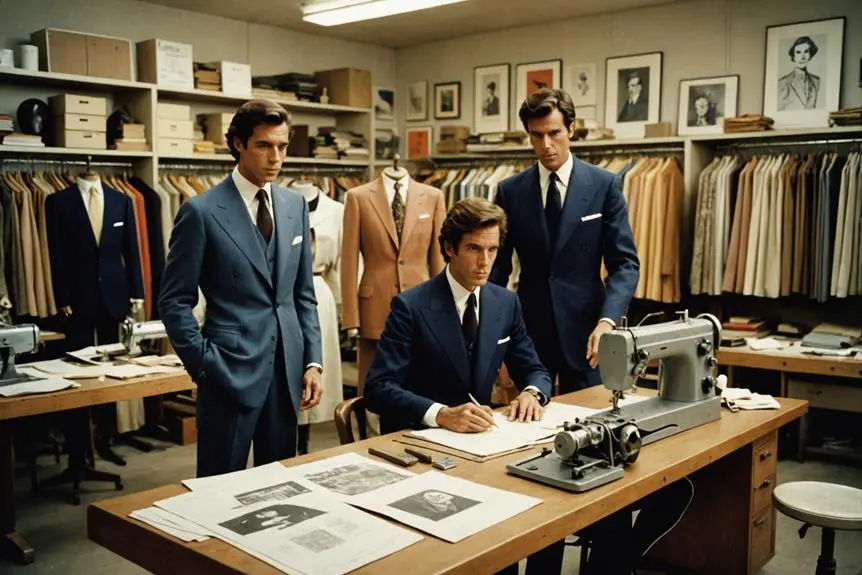
The inception of Giorgio Armani S.p.A. in 1975 marked a pivotal moment in the fashion world, driven by the visionary partnership of Giorgio Armani and Sergio Galeotti. You'll notice how their focus on menswear laid the groundwork for a brand that would soon redefine style standards. Their innovative designs, showcased in the 1976 runway show, included the unstructured jacket, a game-changer that transformed traditional tailoring norms. This shift not only resonated with the contemporary man but also captured the attention of the fashion industry at large.
As you explore deeper, consider how Armani's early career shaped his aesthetic. Working for Nino Cerruti and his stint as a window dresser honed his eye for detail and form. By 1981, the brand expanded into womenswear, further solidifying its influence and reputation. The 1980s introduced chic pantsuits, which revolutionized professional women's fashion, establishing Armani's legacy for timeless quality.
In these formative years, Giorgio Armani didn't just create garments; he crafted a new language of fashion that spoke to elegance and innovation, setting a high bar for what was to come in the industry.
Iconic Fashion Innovations
Giorgio Armani's influence on the fashion landscape is epitomized by his groundbreaking innovations that redefined tailoring and aesthetics. In 1975, he introduced the unstructured jacket, a game-changing piece that emphasized comfort and a more natural silhouette, moving away from rigid, formal designs. This innovation not only shifted how you perceive tailoring but also redefined modern elegance in menswear.
The 1980s saw Armani's "power suits" emerge as iconic symbols of the economic boom, characterized by broad shoulders and wide lapels that embodied modern masculinity. As a fashion designer, he understood the zeitgeist, creating garments that not only looked powerful but also felt empowering.
Moreover, Armani's pioneering use of unexpected materials brought a unique blend of elegance and casual style, setting new trends in the industry. He didn't stop at menswear; his introduction of unstructured women's jackets, inspired by traditional menswear fabrics, offered revitalizing alternatives to conventional styles. The designer's influence permeated popular culture, especially through films like "American Gigolo," which showcased his designs and solidified his status in contemporary fashion. Armani's innovations continue to resonate, shaping how we think about style today.
Brand Expansion Strategies
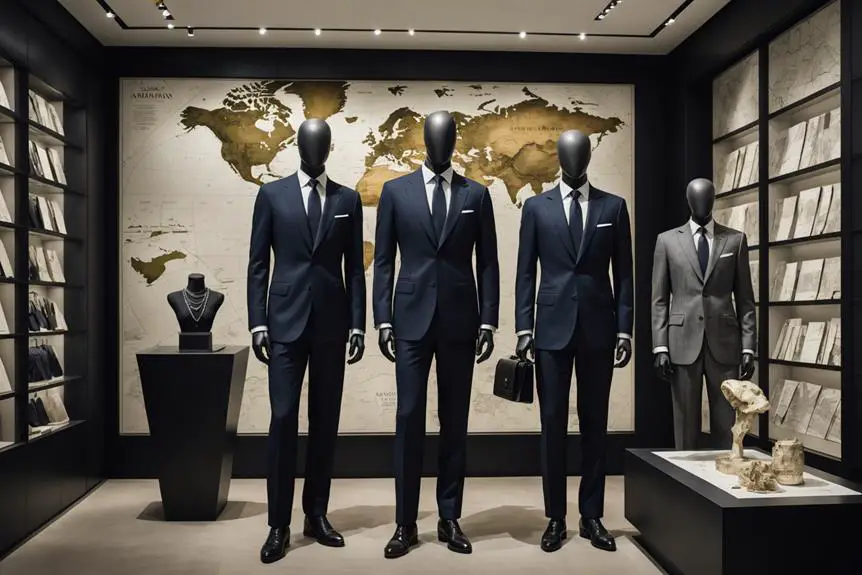
While expanding its brand presence, Armani has deftly navigated the complexities of a global market, achieving remarkable growth and diversification. By the late 1990s, the brand operated over 200 stores worldwide and reached annual sales of $2 billion, showcasing its effective brand expansion strategies. The introduction of sub-brands designed, such as Emporio Armani and Armani Exchange, enabled the label to cater to diverse market segments, appealing to various consumer demographics.
In 2005, the launch of Armani Privé elevated the brand's luxury status, enticing high-end clientele with haute couture offerings. This strategic move not only reinforced its position in the luxury sector but also expanded its appeal. Additionally, Armani's foray into makeup, home goods, and sportswear diversified its product offerings, transforming the brand into a all-encompassing lifestyle brand.
The establishment of Armani Hotels and restaurants further broadened the portfolio, tapping into the luxury hospitality market and creating a holistic luxury experience for consumers. These calculated moves illustrate how Armani has successfully integrated various facets of lifestyle and luxury, ensuring its relevance and prestige in an ever-evolving global landscape.
Awards and Recognitions
Armani's remarkable journey through the fashion industry has not gone unnoticed, as evidenced by numerous accolades that celebrate both his creative genius and his impact on global fashion culture. Giorgio Armani's influence extends beyond design; it's a legacy woven into the very fabric of modern style. In recognition of his contributions, he received France's prestigious Legion of Honour, underscoring his role in shaping fashion and culture.
In 2022, Armani was honored with the Visionary Award at the Sustainable Fashion Awards, acknowledging his steadfast commitment to sustainability in a challenging industry. This recognition aligns with his broader vision for a more responsible fashion landscape. The following year, the State Mint dedicated four limited-edition coins to him, a reflection of his enduring legacy and influence.
Additionally, the Mayor of Venice awarded him the Golden Lion crafted from Murano glass in 2023, celebrating his status as an icon of Italian style. These honors reflect not only Armani's pioneering spirit but also his profound impact on the fashion world, solidifying his place as a true visionary whose work continues to inspire generations.
Sustainability Efforts

Sustainability in fashion has become a critical focus, and Armani has embraced this shift with innovative initiatives aimed at reducing environmental impact. In 2023, the brand launched the Apulia Regenerative Cotton Project, which emphasizes agroforestry-based cotton production, reflecting its commitment to sustainability. This project not only enhances environmental responsibility but also contributes to sustainable fashion practices that resonate with eco-conscious consumers.
Armani's dedication to ethical fashion is evident in its strategies that prioritize People, Planet, and Prosperity. By collaborating with the Sustainable Markets Initiative and the Circular Bioeconomy Alliance, the brand seeks to foster sustainable practices across its operations. Importantly, in 2016, Armani ceased using animal fur, aligning itself with modern ethical fashion principles and consumer expectations for humane practices.
The brand's ongoing efforts have not gone unnoticed; in 2022, Armani was awarded the Visionary Award at the Sustainable Fashion Awards, recognizing its commitment to sustainability. Through these initiatives, you can see how Armani is not just adapting to the growing demand for sustainable fashion but is leading the charge in reducing its environmental impact and advocating for a more responsible industry.
Cultural Impact and Legacy
Few fashion brands have left as indelible a mark on cultural identity as Armani. The Armani Group has shaped the landscape of modern fashion, transforming how you perceive elegance and sophistication. Its power suits became iconic symbols of the 1980s economic boom, redefining professional women's fashion and setting new standards for tailored attire.
Armani's influence extends beyond clothing; its designs featured prominently in films like "American Gigolo" (1980), solidifying its status in Hollywood. Collaborations with artists and designers further enhance its cultural legacy, ensuring a vibrant presence in film and entertainment, especially during red carpet events.
Additionally, the brand's commitment to social responsibility and sustainable practices, such as the Acqua For Life project, resonates with modern consumers, reflecting a deeper cultural consciousness. This alignment with ethical standards strengthens its appeal and relevance in today's market.
| Aspect | Description | Impact |
|---|---|---|
| Iconic Designs | Power suits and elegant attire | Redefined women's professional fashion |
| Film Influence | Featured in "American Gigolo" | Boosted recognition in Hollywood |
| Social Responsibility | Acqua For Life project | Enhanced brand image and consumer trust |
| Italian Style | Global icon of elegance | Represents cultural heritage |
Product Diversification
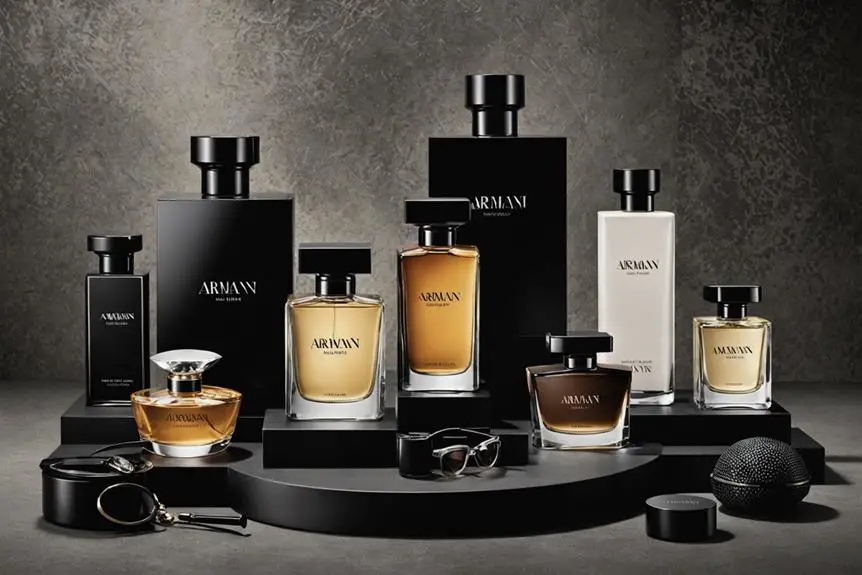
Product diversification has become a hallmark of the Armani brand, allowing it to cater to a broad spectrum of consumer preferences and lifestyles. By expanding its product portfolio, Giorgio Armani effectively reaches various demographics, guaranteeing a strong presence in the luxury market.
- Giorgio Armani: An ultra-premium line targeting consumers aged 35-50.
- Emporio Armani: Designed for young professionals aged 25-35, appealing to a modern audience.
- Armani/Casa: A foray into luxury home furnishings, showcasing the brand's versatility.
This strategic diversification includes the introduction of Armani Junior and Armani Baby in 1979, which accommodates children up to 14 years old. By doing so, Armani taps into family-oriented consumers, further broadening its appeal. The brand's partnerships, particularly with L'Oréal since 1980 for fragrances and cosmetics, solidify its position in the beauty sector, linking high-fashion with everyday luxury.
In an age where consumer preferences are constantly evolving, Armani's ability to expand beyond clothing into lifestyle products affirms its status among luxury brands. This multifaceted approach not only enhances brand loyalty but also guarantees relevance in a competitive marketplace.
Marketing and Advertising
Armani's strategic approach to marketing and advertising complements its product diversification, reinforcing the brand's identity and presence in the luxury market. By actively participating in Milan Fashion Week, Armani showcases its collections, such as Giorgio Armani and Emporio Armani, emphasizing its influence and innovation in fashion.
The brand's high-profile advertising campaigns featuring celebrities like Beyoncé and Megan Fox greatly enhance visibility and appeal to diverse audiences. These celebrity endorsements not only attract attention but also establish a connection with Hollywood fashion and culture, making the brand more relatable to consumers.
In response to contemporary values, Armani ceased using animal fur in 2016, aligning its marketing efforts with ethical considerations and modern consumer expectations regarding sustainability. This commitment to sustainability resonates well with a growing demographic that values ethical practices in fashion.
Armani's "New Normal" advertising campaigns from 2015 and 2016 effectively highlighted contemporary themes and lifestyles, showcasing the brand's adaptability to changing consumer sentiments. By integrating these elements into its marketing strategy, Armani not only maintains relevance in a competitive market but also reinforces its status as a leader in luxury fashion.
Financial Performance

The financial performance of Giorgio Armani showcases the brand's resilience and adaptability in a fluctuating luxury market. With a strong foundation, Armani continues to thrive, reflecting its robust financial strength and market savvy.
- Estimated net worth of $8.6 billion as of November 2020
- Annual sales reached approximately $2 billion by the late 1990s
- A remarkable 34% sales increase reported in the first half of 2021
Operating as a privately held company guarantees that Giorgio Armani maintains financial autonomy, allowing for strategic long-term planning. The brand's strong market presence is evident not only in its physical boutiques but also through a well-established online platform, which enhances sales capabilities and reaches a broader audience.
The impressive sales increase in 2021 illustrates Armani's ability to rebound from the pandemic's impact, positioning it favorably within the luxury sector. As consumer preferences evolve, Armani's adaptability within the ever-changing landscape further solidifies its status as a key player. This financial performance reflects a commitment to excellence, guaranteeing that the brand remains a symbol of luxury and sophistication worldwide.
Future Challenges and Opportunities
Steering the future poses significant challenges and opportunities for luxury brands like Giorgio Armani. Maintaining the brand identity and vision post-Giorgio Armani requires you to navigate evolving consumer expectations while safeguarding core values and aesthetics. The luxury market is fiercely competitive, demanding that you invest in innovative designs and marketing strategies to remain relevant amidst shifting trends.
Economic fluctuations and global events can alter luxury spending behaviors, compelling you to adopt an agile approach to pricing and product offerings. Additionally, sustainability pressures are mounting; today's consumers prioritize ethical practices, pushing you to enhance sustainability initiatives and closely monitor your supply chain.
A robust succession plan is essential for ensuring continuity in leadership and effective strategic decision-making as the brand evolves beyond the founder's direct influence. By addressing these challenges and seizing opportunities, you can fortify Armani's legacy while adapting to the dynamic landscape of luxury. The path ahead involves a careful balance between honoring tradition and embracing innovation, ensuring that Giorgio Armani not only survives but thrives in an ever-evolving market.
Frequently Asked Questions
What Is the Story Behind Armani?
When you explore Armani's story, you'll find innovation in menswear, a groundbreaking runway debut, and a swift expansion into womenswear. The brand's commitment to sustainability and cultural influence solidifies its status in fashion history.
What Is Armani Most Famous For?
Armani's most famous for revolutionizing menswear with its unstructured jacket, redefining tailoring norms. You'll recognize its power suits as symbols of success and sophistication, influencing fashion trends and celebrity culture throughout the decades.
Why Are There 3 Armani Brands?
You'll find three Armani brands because they strategically target different market segments. This diversification allows you to access luxury, contemporary, and casual styles, ensuring you can enjoy Armani's offerings regardless of your lifestyle or budget.
Who Is Armani Owned By?
Armani's owned solely by Giorgio Armani, who founded the company in 1975. This ownership grants him complete control, allowing him to shape the brand's identity and strategically expand its diverse product offerings without external pressures.
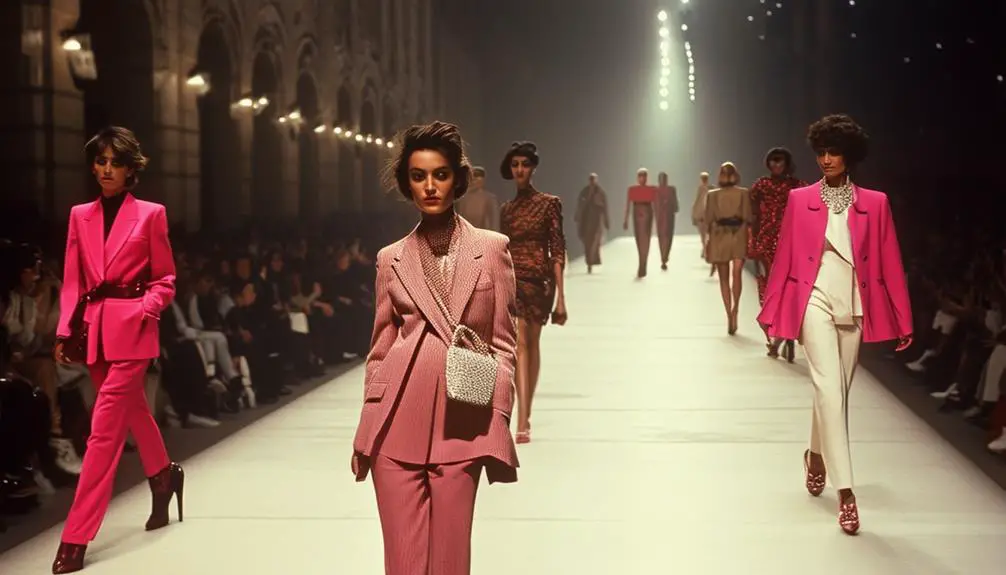

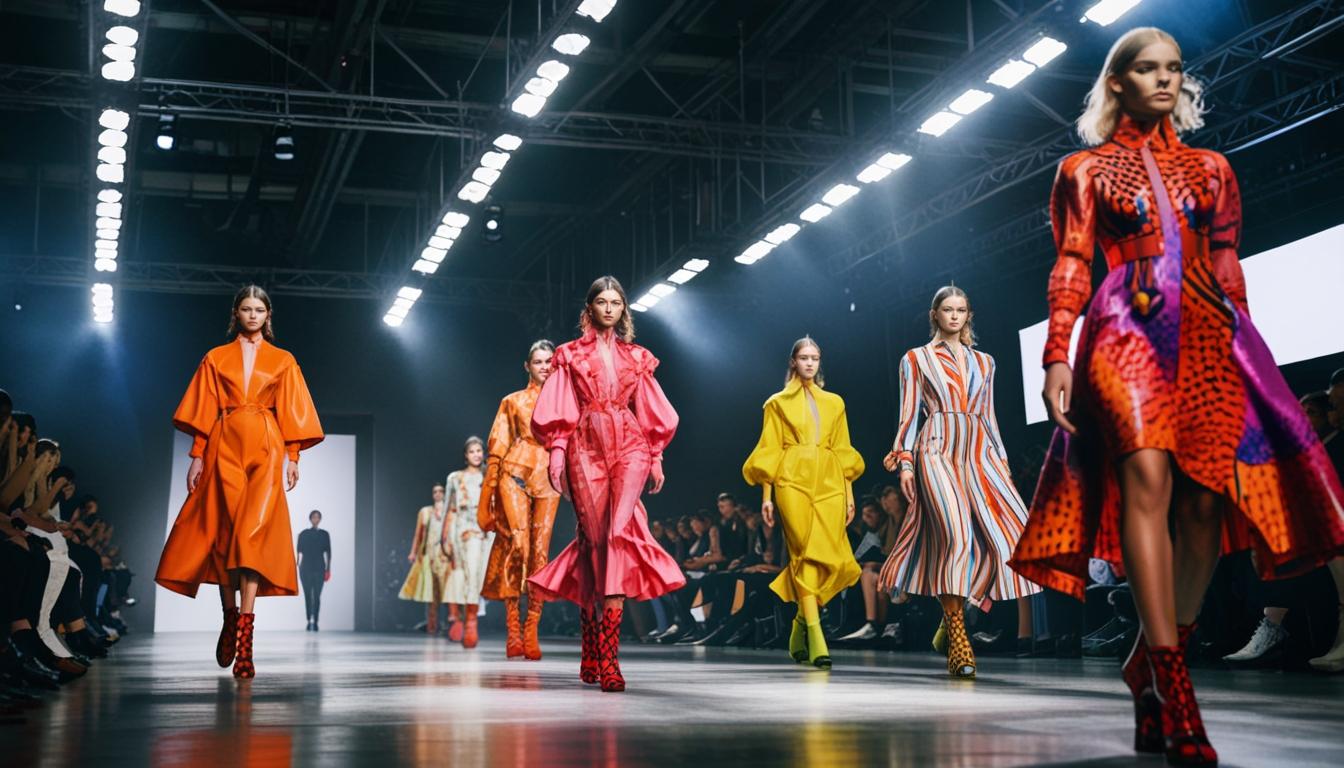

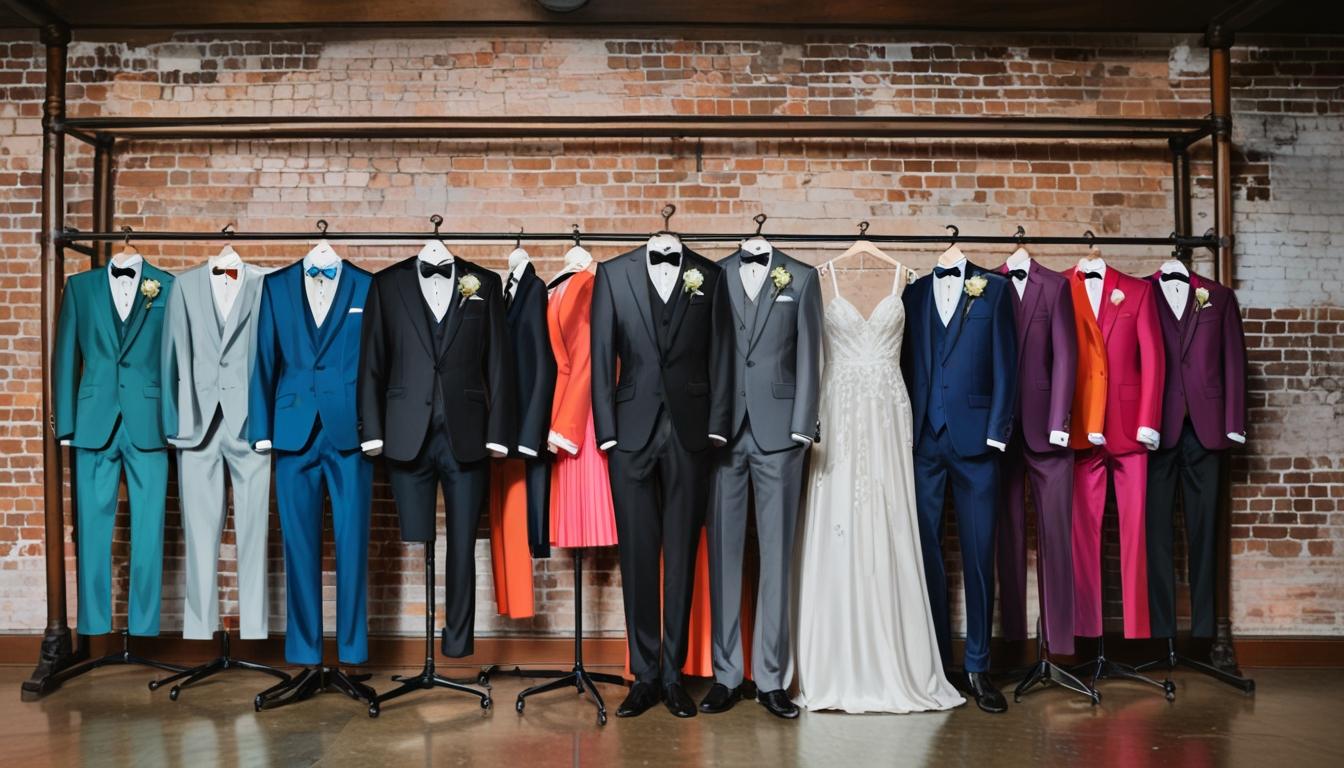
Thanks for sharing. I read many of your blog posts, cool, your blog is very good.